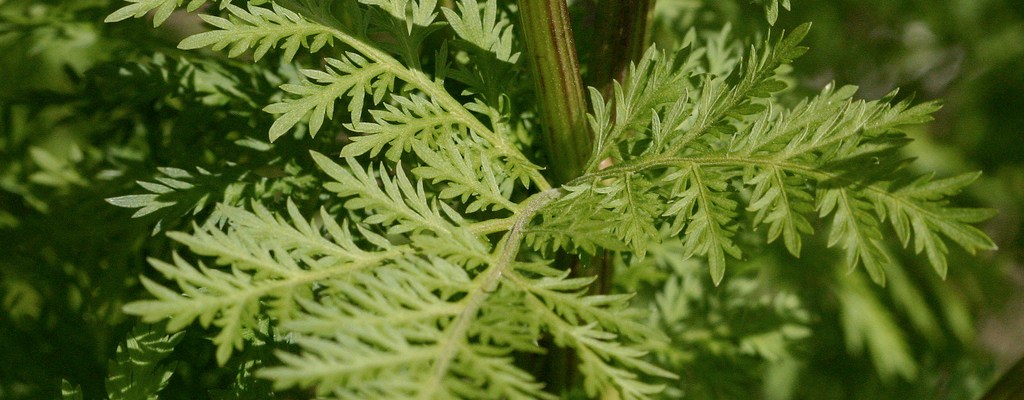|
Written By Jack Zhong
Edited By Josephine McGowan On October 6, 2015, the Nobel Prize for Medicine and Physiology was awarded to William C. Campbell and Satoshi Ōmura for “their discoveries concerning a novel therapy against infections caused by roundworm parasites.” Youyou Tu also shared this prize for “her discoveries concerning a novel therapy against Malaria.” While this esteemed award recognizes the contributions of these doctors against pervasive diseases, their similar approaches in combatting them are ingeniously intuitive. Indeed, they demonstrate that the best way to combat these diseases is not to synthesize treatments in the lab, but rather to derive natural remedies from the world around them. Their successful strategies and findings open up new possibilities for effectively curing widespread maladies. Parasitic diseases still plague mankind today as it has for thousands of years. Diseases range from river blindness to elephantiasis, scrotal hydrocele to malaria. The symptoms are as wide ranging as the diseases. Some cause blindness, while others lead to disabling symptoms. On a larger scale, parasitic diseases decrease living conditions for those suffering from them. Others lead to death. Although diseases like malaria seem do not seem to be a large problem in the US, parasitic diseases are quite prevalent and deadly in sub-Saharan Africa, South Asia, and South America. They affect vulnerable patient populations, who are often also impacted by hunger, water shortage, and military conflicts. ]In attempting to quell these issues, Dr. Ōmura and Dr. Campbell began by assessing natural products in the soil. Dr. Ōmura is an expert at isolation of natural products. A natural product is considered a chemical or mixture found in nature, rather than ones produced in a laboratory. Dr. Ōmura focused on a group of bacteria (Streptomyces) found in soil that has been known to produce antibacterial chemicals. Streptomyces was notoriously very difficult to keep alive in the laboratory, but Dr. Ōmura developed methods to grow these bacteria in laboratory conditions. Thus, Dr. Ōmura discovered and characterized new strains of the bacteria from soil and grew these bacteria. Of the thousands of strains, he picked the most promising ones, and analyzed the chemicals they produce. A strain that he found outside of “a golf course in Ito, Japan” would eventually produce an effective component called Avermectin that can treat a variety of parasitic worms such as intestinal nematodes. Collaborating with Dr. Ōmura, Dr. Campbell studied the cultures that Dr. Ōmura produced. Dr. Campell began by testing broths of dead bacteria on mice with parasitic infections. Dr. Campbell worked with Thomas Miller, a fellow researcher, to study the chemistry of the effective components. Dr. Campbell demonstrated the antiparasitic effects of the agents on domestic and farm animals. Using chemical techniques, Dr. Campbell modified Avermectin to Ivermectin, which was a more effective version. With little side effects on the host, Ivermectin is effective against various parasites and in both humans and animals. Ivermectin was used in clinical trials in 1981, successfully eliminating river blindness from patients. He found that Ivermectin acts through chloride channels found in muscles and nerve cells of the parasites; its administration leads to paralysis of the parasite in the host. The drug has effectively reduced levels of diseases caused by worm parasites, such as lymphatic filariasis and river blindness. Meanwhile in the 1960’s, Dr. Tu began developing a treatment for malaria, a deadly disease transmitted by mosquitos. She searched through historical documents of Chinese medicine for treatments against fever. Dr. Tu’s research group found that sweet wormwood appeared in hundreds of Chinese medicine recipes for treating fever (Figure 3). She initially found mixed results in treating rodent malaria with the extract from sweet wormwood. In response to this, Dr. Tu studied recipes of Ge Hong (340 A.D.) and discovered a cold extraction method to isolate the active ingredients from sweet wormwood. The results were very successful, as the drug Arteminsinin was discovered. Using Arteminsinin in combination with other anti-malarial drugs has been effective in significantly reducing malaria rates globally. The drug has been hypothesized to act through the Kelch 13 protein, which is related to delayed parasite clearance. Today, there tends to be the perception that many drugs we use now are synthesized and engineered by humans. Some believe that we are past the age of “traditional” medicine. Yet, over the years, the discoveries of these three scientists have saved countless lives from devastating parasitic diseases. The stories of their research processes and scientific methods are fascinating, and demonstrate that many of the most effective drugs can come from studying nature and medicinal remedies of the past. Dr. Ōmura and Dr. Campbell created Ivermectin from extracts of bacteria. With the help of old Chinese traditional medicine, Dr. Tu found Arteminsinin from the sweet wormwood. These Nobel laureates illustrate the power of optimizing what is already abundant in nature. There may be many more cures locked away in the soil, in the plants, waiting for us to discover them. Therefore, when searching for cures, we must not let hubris blind us from the wonders of nature.
1 Comment
I like to take care of my health, both physical and mental. To avoid deficiencies, I had to adopt a balanced diet and above all use a specific food supplement. It is on this article that I found the product that allowed me to relive and enjoy optimal well-being without health concerns.
Reply
Leave a Reply. |
Categories
All
Archives
April 2024
|

